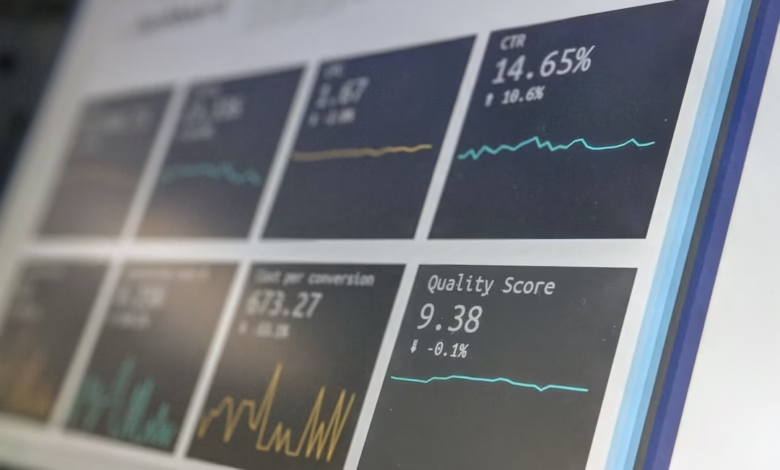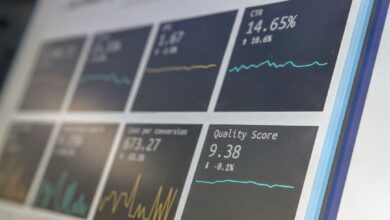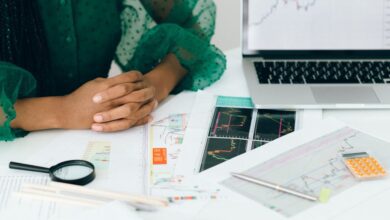Commodities Trading 101: Essential Strategies and Market Analysis Techniques for Success

Commodities trading has emerged as a vital component of the global financial landscape, offering investors opportunities to trade raw materials such as gold, silver, oil, and various agricultural products. As a unique subset of trading, commodities trading encompasses a range of strategies and analytical techniques that can lead to significant returns when executed effectively. In an age where online trading platforms enable seamless access to diverse markets, understanding the key concepts behind commodities trading becomes crucial for both novice and seasoned traders. This article will explore essential facets of commodities trading, including fundamental and technical analysis methods, risk management practices, and effective trading strategies. Whether you are interested in day trading, swing trading, or leveraging the latest in algorithmic and high-frequency trading, mastering the nuances of commodities trading can help you navigate this complex market with confidence. Join us as we delve into the world of commodities trading and equip you with the knowledge you need to succeed.
- 1. Understanding Commodities Trading: Key Concepts and Strategies for Success
- 2. Market Analysis Techniques: Technical vs. Fundamental Analysis in Commodities Trading
- 3. Risk Management in Commodities Trading: Essential Practices for Traders
1. Understanding Commodities Trading: Key Concepts and Strategies for Success
Commodities trading involves the buying and selling of raw materials, such as gold, silver, oil, and agricultural products. Understanding the key concepts and strategies behind commodities trading is essential for anyone looking to succeed in this dynamic market.
One of the foundational aspects of commodities trading is recognizing the different types of instruments available. Traders can engage in futures trading, where contracts are made to buy or sell a commodity at a predetermined price on a specific date. This is often utilized for risk management, allowing businesses and investors to hedge against price fluctuations. Alternatively, commodities can be traded through derivatives trading, where the value is derived from an underlying asset, allowing for more flexibility.
Technical analysis plays a crucial role in commodities trading. By analyzing price charts and market trends, traders can identify potential entry and exit points. This approach is often paired with fundamental analysis, which involves examining economic indicators and news that can impact commodity prices. Combining these methods creates a well-rounded trading strategy that enhances decision-making.
Risk management is vital in commodities trading, as volatility can lead to significant gains or losses. Traders must implement strategies such as leverage trading and margin trading to maximize their potential while carefully monitoring their exposure. Additionally, understanding trading psychology is essential, as emotional decision-making can lead to poor trading outcomes.
Developing a trading strategy tailored to individual risk tolerance and market conditions is critical. Whether employing day trading, swing trading, or scalping techniques, traders should test their strategies on online trading platforms before committing significant capital. Options trading and CFD trading also provide opportunities for traders to speculate on price movements without owning the underlying asset.
Moreover, with the rise of technology, algorithmic trading and high-frequency trading have become prevalent, allowing traders to execute orders at lightning speed based on complex algorithms. Social trading and copy trading platforms enable less experienced traders to follow and mimic the trades of seasoned professionals, providing valuable insights into market movements.
In summary, successful commodities trading requires a comprehensive understanding of market analysis, trading strategies, and risk management. By leveraging these concepts, traders can navigate the complexities of the commodities market and enhance their chances of achieving consistent profits.
2. Market Analysis Techniques: Technical vs. Fundamental Analysis in Commodities Trading
In the realm of commodities trading, understanding market analysis techniques is crucial for making informed decisions. Two primary methods dominate this field: technical analysis and fundamental analysis. Each approach provides unique insights and can greatly influence trading strategies.
Technical analysis focuses on historical price movements and trading volume to forecast future price trends. Traders use various tools, such as charts and indicators, to identify patterns that may indicate potential price shifts. This method is particularly beneficial for day trading and swing trading, where quick, data-driven decisions are essential. For instance, moving averages, Relative Strength Index (RSI), and Bollinger Bands are popular indicators that traders utilize to gauge market momentum and spot entry and exit points. By employing technical analysis, traders can develop specific trading strategies, such as scalping or high-frequency trading, that rely on short-term price fluctuations.
On the other hand, fundamental analysis delves into the underlying factors that influence commodity prices. This approach involves examining economic indicators, supply and demand dynamics, geopolitical events, and seasonal trends. For example, the price of oil can be significantly affected by OPEC announcements, changes in production levels, or global economic conditions. Traders engaged in options trading or futures trading often lean on fundamental analysis to make long-term decisions based on market fundamentals and macroeconomic factors. By understanding these elements, traders can better manage risk and leverage their positions effectively.
Both technical and fundamental analyses can be integrated into a comprehensive trading strategy. For instance, a trader might use technical analysis to identify a potential entry point for a commodity, then apply fundamental analysis to understand the broader market context and potential risks. This hybrid approach enhances decision-making, especially in volatile markets where commodities are prone to sudden price changes.
Ultimately, mastering both technical and fundamental analysis is vital for successful commodities trading. Whether you are using online trading platforms for derivatives trading or engaging in energy trading, a solid grasp of these techniques can provide a competitive edge. Furthermore, incorporating trading psychology into your analysis can help you remain disciplined and focused, reducing the impact of emotional decision-making on your trading outcomes.
3. Risk Management in Commodities Trading: Essential Practices for Traders
Risk management is a critical component of commodities trading, as the volatility of raw materials like gold, silver, oil, and agricultural products can lead to significant financial gains or losses. Traders must implement essential practices to protect their capital and ensure long-term success.
One of the first steps in effective risk management is establishing a clear trading strategy that includes setting stop-loss orders. This means defining the maximum loss a trader is willing to accept on a trade. By doing so, traders can mitigate potential losses in a rapidly fluctuating market. Stop-loss orders are vital not only in commodities trading but also in stock trading, forex trading, and other forms of online trading platforms.
Diversification is another key practice. Traders should avoid putting all their capital into a single commodity or market segment. By spreading investments across various commodities, such as energy trading and agricultural products, traders can reduce the overall risk of their portfolio. This principle applies to other trading strategies like index trading and ETF trading, where diversification can help stabilize returns.
Understanding the use of leverage is crucial in commodities trading. While leverage can amplify profits, it also increases the risk of substantial losses. Traders must assess their tolerance for risk and decide how much leverage to use in their trading activities. This consideration is important in derivatives trading, margin trading, and options trading, where the potential for both high returns and high losses exists.
Regular market analysis is essential in managing risk effectively. Traders should employ both technical analysis and fundamental analysis to understand market trends and price movements. By analyzing charts and economic indicators, traders can make informed decisions about when to enter or exit trades, whether they are engaged in day trading, swing trading, or high-frequency trading.
Lastly, trading psychology plays a significant role in risk management. Traders must remain disciplined and avoid emotional decision-making, which can lead to impulsive trades. Developing a strong mental framework can help traders adhere to their risk management strategies consistently.
In conclusion, risk management in commodities trading involves a combination of strategic planning, diversification, leverage usage, market analysis, and psychological discipline. By incorporating these essential practices, traders can navigate the complexities of the commodities market while protecting their investments and enhancing their overall trading success.
In conclusion, commodities trading offers a unique opportunity for investors to diversify their portfolios and engage with a dynamic market of raw materials, including gold, silver, oil, and agricultural products. By understanding key concepts and strategies, traders can navigate the complexities of the market, whether they are involved in stock trading, forex trading, or derivatives trading. Employing effective market analysis techniques—both technical and fundamental—will enhance decision-making and improve trading outcomes.
Additionally, implementing robust risk management practices is crucial for sustaining success in commodities trading. This includes being mindful of leverage trading, margin trading, and the inherent volatility of the commodities market. As traders explore various avenues such as day trading, swing trading, and even algorithmic trading, they must also pay attention to trading psychology to maintain discipline and emotional control.
As the landscape of trading continues to evolve with the rise of online trading platforms and innovative trading strategies, staying informed about market trends and analysis will be invaluable. Whether you’re interested in energy trading, crypto trading, or exploring options like binary options and CFD trading, the principles of risk management and market analysis will remain fundamental to your trading journey. Ultimately, with the right approach and mindset, commodities trading can be a rewarding venture for both novice and experienced traders alike.
References:
[Include your list of sources here]




